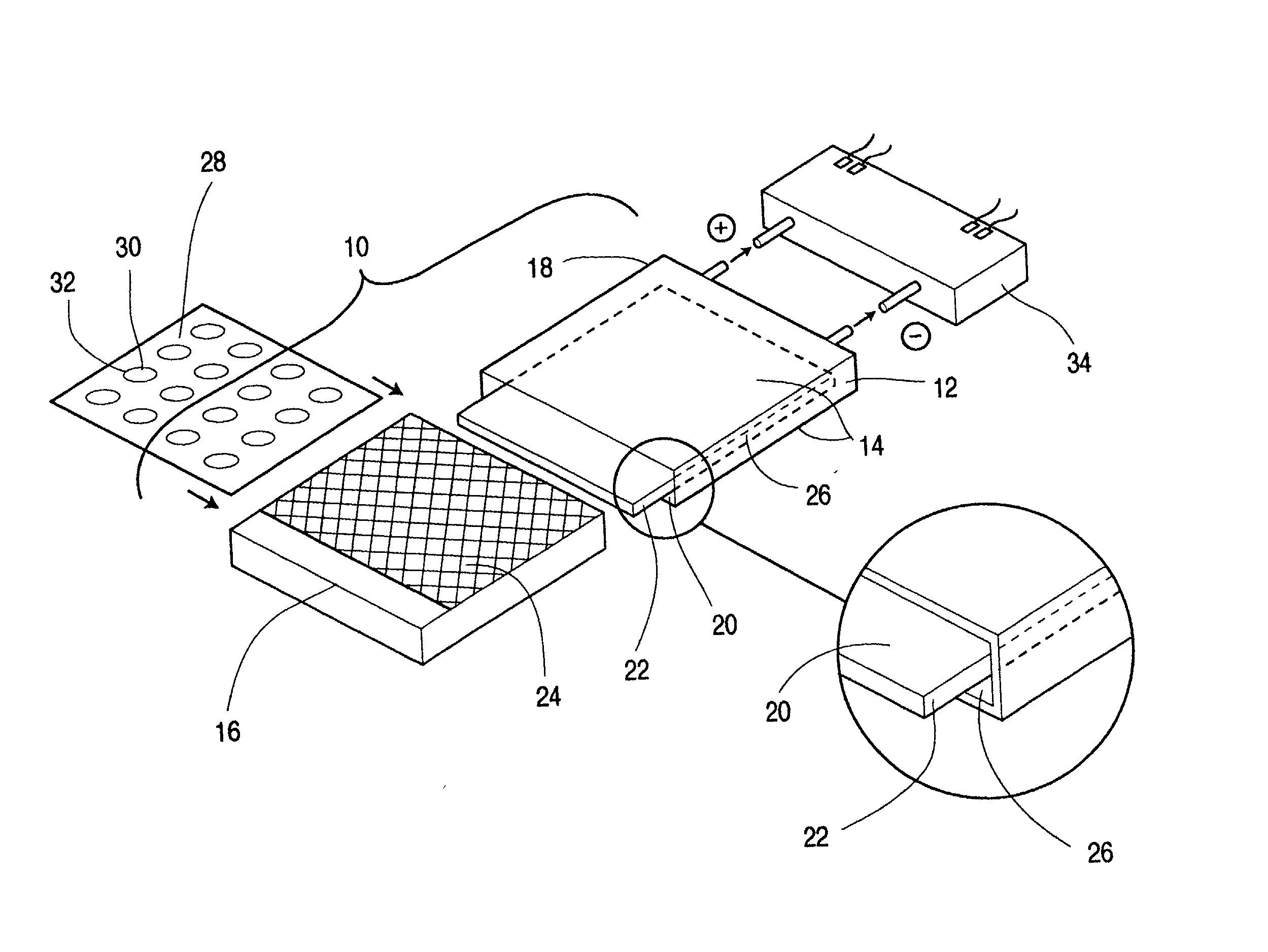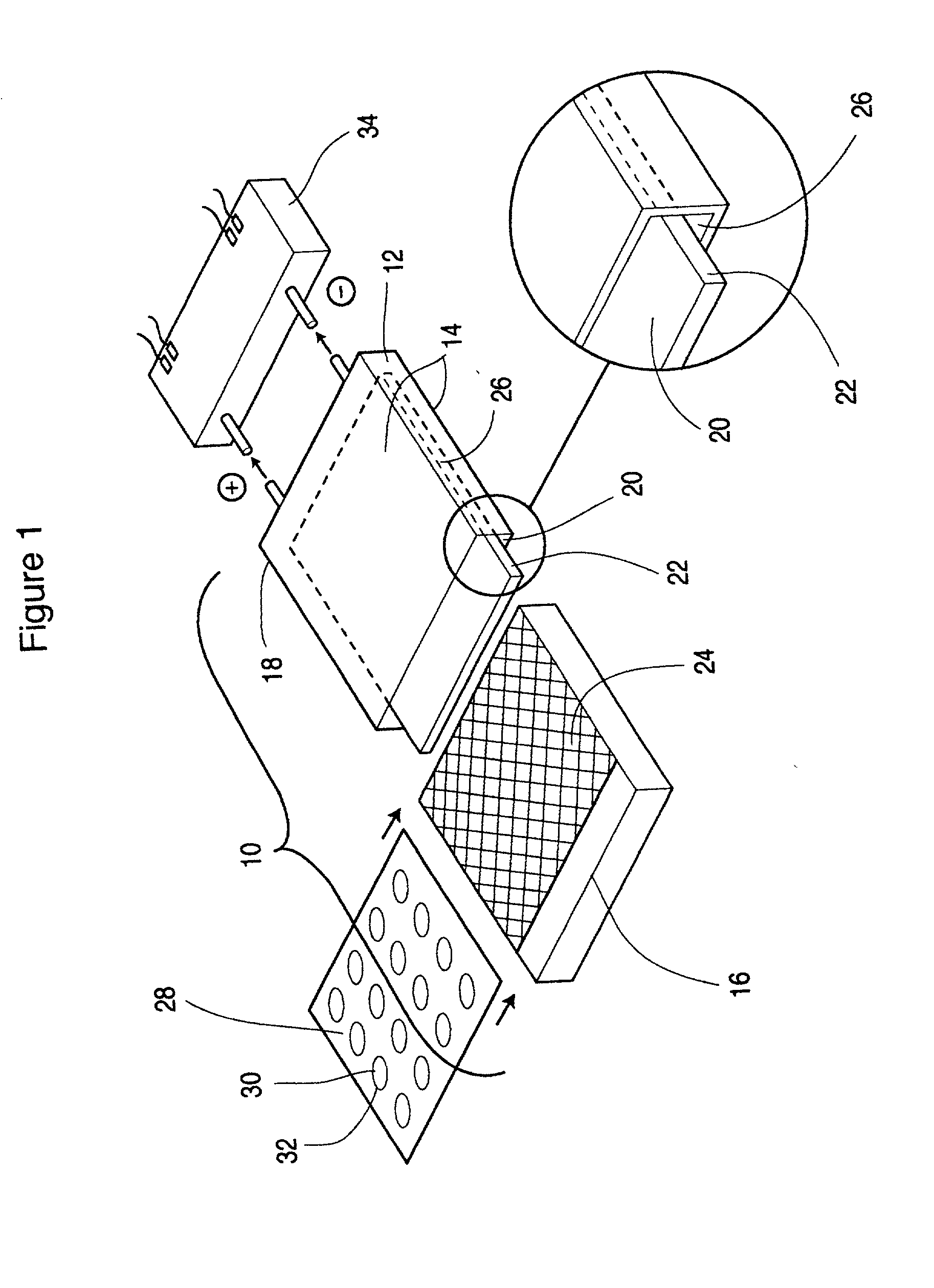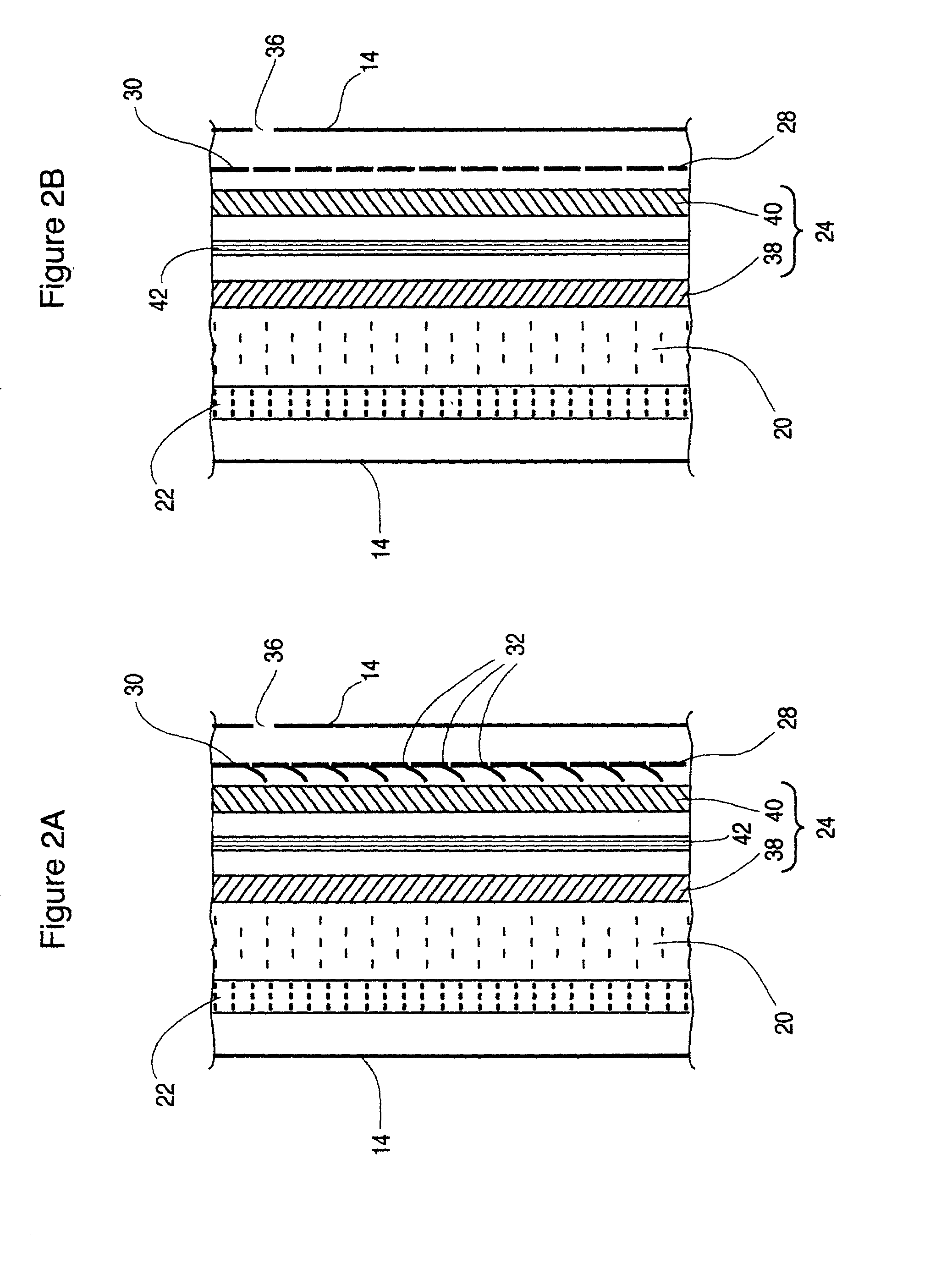Metal gas batteries
a technology of metal gas batteries and metal gas, which is applied in the direction of cell components, cell maintenance/service, cell component details, etc., can solve the problems of reducing the power of the cell, reducing the life of the cell, and unable to prevent water vapor from entering or egressing into the cell
- Summary
- Abstract
- Description
- Claims
- Application Information
AI Technical Summary
Benefits of technology
Problems solved by technology
Method used
Image
Examples
example 2
[0063] Another test was conducted to show the effectiveness of the resilient flexible membrane in preventing water evaporation from metal air cell according to the invention as used in Example 1.
[0064] A graduated syringe was used to fill the cell initially with 14 ml of distilled water through the delivery ports located on top of the cell between the anode and cathode leads. The closing screws were then tightened to ensure that no water evaporated from the ports. The cell was placed in a upright position and remained under room conditions throughout the duration of the test, namely at 1+ / -0.02 atm pressure, 30+ / -3.degree. C. temperature, and 67+ / -5% relative humidity. The weight of the filled cell was recorded initially (within 10 mg accuracy). Subsequent weight measurements were taken at pre-determined time intervals over a total period of 52 hrs. The weight loss was used to estimate the total evaporation rate of the water through the cathodes.
[0065] The above experiment was repea...
example 3
[0067] An aluminum air cell as described in Example 1 and Example 2 was filled with 15 mL of 4 molar potassium hydroxide electrolyte. The cell was then connected to an electronic load in which the discharge current could be set. 16 different discharge current values were used ranging from 0 to 3 Amperes. At each discharge current, beginning with 0 amperes and increasing in units to 3 amperes, the steady state voltage would be recorded. Usually a constant voltage would be obtained within 1 minute of voltage measurement. The variation of voltage at the steady state value would be obtained by recording 3 separate voltage values. The data is plotted in FIG. 7 with the error bars for each measurement. A line is drawn through the data to show the data trend. As the discharge current is increased the voltage of the cell decreased. The same cell was then wrapped with the resilient flexible membrane and the same set of discharge current measurements taken. The data is also plotted in FIG. 7....
example 4
[0068] The performance of a metal air cell can change with time for a number of reasons including loss or consumption of electrolyte. In this test the same aluminum air cell was discharged at a constant 2 ampere rate with a resiliently flexible membrane cover. The same type of cell as describe in Example 1 and 2 was filled with 15 mL of 4 M caustic electrolyte. The cell was again connected to the electronic load and was discharged at a constant 2 amperes with the voltage versus time being recorded. The data were plotted as power (volts times current) versus time and are shown as FIGS. 8 and 9. The cell has a high power output which then drops to a lower value within the first minute of discharge before recovering to a steady state value. This characteristic is typical for this type of cell. The membrane cover with flaps clearly allows the cell to operate and discharge as demonstrated by the data in FIGS. 8 and 9.
PUM
 Login to View More
Login to View More Abstract
Description
Claims
Application Information
 Login to View More
Login to View More - R&D
- Intellectual Property
- Life Sciences
- Materials
- Tech Scout
- Unparalleled Data Quality
- Higher Quality Content
- 60% Fewer Hallucinations
Browse by: Latest US Patents, China's latest patents, Technical Efficacy Thesaurus, Application Domain, Technology Topic, Popular Technical Reports.
© 2025 PatSnap. All rights reserved.Legal|Privacy policy|Modern Slavery Act Transparency Statement|Sitemap|About US| Contact US: help@patsnap.com



